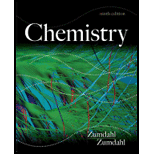
Chemistry
9th Edition
ISBN: 9781133611097
Author: Steven S. Zumdahl
Publisher: Cengage Learning
expand_more
expand_more
format_list_bulleted
Concept explainers
Textbook Question
Chapter 22, Problem 92E
What types of interactions can occur between the side chains of the following amino acids that would help maintain the tertiary structure of a protein?
a. cysteine and cysteine
b. glutamine and serine
c. glutamic acid and lysine
d. proline and leucine
Expert Solution & Answer
Trending nowThis is a popular solution!

Chapter 22 Solutions
Chemistry
Ch. 22 - What is a hydrocarbon? What is the difference...Ch. 22 - Prob. 2RQCh. 22 - What are aromatic hydrocarbons? Benzene exhibits...Ch. 22 - Summarize the nomenclature rules for alkanes,...Ch. 22 - What functional group distinguishes each of the...Ch. 22 - Distinguish between isomerism and resonance....Ch. 22 - Prob. 7RQCh. 22 - Prob. 8RQCh. 22 - Prob. 9RQCh. 22 - Prob. 10RQ
Ch. 22 - Prob. 11RQCh. 22 - Describe the structural differences between DNA...Ch. 22 - Prob. 1QCh. 22 - Prob. 2QCh. 22 - Prob. 3QCh. 22 - Prob. 4QCh. 22 - Prob. 5QCh. 22 - Prob. 6QCh. 22 - Prob. 7QCh. 22 - Give an example reaction that would yield the...Ch. 22 - Prob. 9QCh. 22 - Prob. 10QCh. 22 - Prob. 11QCh. 22 - Prob. 12QCh. 22 - Prob. 13ECh. 22 - Prob. 14ECh. 22 - Draw all the structural isomers for C8H18 that...Ch. 22 - Draw all the structural isomers for C8H18 that...Ch. 22 - Prob. 17ECh. 22 - Prob. 18ECh. 22 - Draw the structural formula for each of the...Ch. 22 - Prob. 20ECh. 22 - Prob. 21ECh. 22 - Name each of the following cyclic alkanes, and...Ch. 22 - Prob. 23ECh. 22 - Draw the structures for two examples of...Ch. 22 - Name each of the following alkenes. a. CH2 = CH ...Ch. 22 - Name each of the following alkenes or alkynes. a....Ch. 22 - Prob. 27ECh. 22 - Give the structure for each of the following. a....Ch. 22 - Prob. 29ECh. 22 - Cumene is the starting material for the industrial...Ch. 22 - Name each of the following. a. b. CH3CH2CH2CCl3 c....Ch. 22 - Prob. 32ECh. 22 - There is only one compound that is named...Ch. 22 - Prob. 34ECh. 22 - Prob. 35ECh. 22 - Prob. 36ECh. 22 - Draw all the structural isomers of C5H10. Ignore...Ch. 22 - Prob. 38ECh. 22 - Draw all the structural and geometrical (cistrans)...Ch. 22 - Draw all the structural and geometrical (cistrans)...Ch. 22 - Draw all structural and geometrical (cistrans)...Ch. 22 - Prob. 42ECh. 22 - Prob. 43ECh. 22 - Prob. 44ECh. 22 - If one hydrogen in a hydrocarbon is replaced by a...Ch. 22 - There are three isomers of dichlorobenzene, one of...Ch. 22 - Identify each of the following compounds as a...Ch. 22 - Prob. 48ECh. 22 - Mimosine is a natural product found in large...Ch. 22 - Minoxidil (C9H15N5O) is a compound produced by...Ch. 22 - For each of the following alcohols, give the...Ch. 22 - Prob. 52ECh. 22 - Prob. 53ECh. 22 - Prob. 54ECh. 22 - Prob. 55ECh. 22 - Prob. 56ECh. 22 - Prob. 57ECh. 22 - Prob. 58ECh. 22 - Prob. 59ECh. 22 - Prob. 60ECh. 22 - Prob. 61ECh. 22 - Prob. 62ECh. 22 - Prob. 63ECh. 22 - Prob. 64ECh. 22 - Prob. 65ECh. 22 - Prob. 66ECh. 22 - Prob. 67ECh. 22 - Prob. 68ECh. 22 - Prob. 69ECh. 22 - Prob. 70ECh. 22 - Prob. 71ECh. 22 - Prob. 72ECh. 22 - Super glue contains methyl cyanoacrylate, which...Ch. 22 - Prob. 74ECh. 22 - Prob. 75ECh. 22 - Prob. 76ECh. 22 - Prob. 77ECh. 22 - Prob. 78ECh. 22 - Prob. 79ECh. 22 - Prob. 80ECh. 22 - Prob. 81ECh. 22 - Prob. 82ECh. 22 - Prob. 83ECh. 22 - Prob. 84ECh. 22 - Aspartame, the artificial sweetener marketed under...Ch. 22 - Prob. 86ECh. 22 - Prob. 87ECh. 22 - Draw the structures of the tripeptides glyalaser...Ch. 22 - Prob. 89ECh. 22 - Prob. 90ECh. 22 - Give an example of amino acids that could give...Ch. 22 - What types of interactions can occur between the...Ch. 22 - Prob. 93ECh. 22 - Prob. 94ECh. 22 - Prob. 95ECh. 22 - Prob. 96ECh. 22 - Prob. 97ECh. 22 - Prob. 98ECh. 22 - Prob. 99ECh. 22 - Prob. 100ECh. 22 - Prob. 101ECh. 22 - Prob. 102ECh. 22 - Prob. 103ECh. 22 - Prob. 104ECh. 22 - Prob. 105ECh. 22 - Prob. 106ECh. 22 - Prob. 107ECh. 22 - Prob. 108ECh. 22 - The base sequences in mRNA that code for certain...Ch. 22 - Prob. 110ECh. 22 - Prob. 111AECh. 22 - Prob. 112AECh. 22 - Prob. 113AECh. 22 - Prob. 114AECh. 22 - Prob. 115AECh. 22 - Prob. 116AECh. 22 - Explain why methyl alcohol is soluble in water in...Ch. 22 - Prob. 118AECh. 22 - Prob. 119AECh. 22 - Prob. 120AECh. 22 - Prob. 121AECh. 22 - Prob. 122AECh. 22 - Prob. 123AECh. 22 - Prob. 124AECh. 22 - Prob. 125AECh. 22 - Prob. 126AECh. 22 - Prob. 127AECh. 22 - Prob. 128AECh. 22 - Prob. 129AECh. 22 - a. Use bond energies (see Table 3-3) to estimate H...Ch. 22 - Prob. 131AECh. 22 - Prob. 132AECh. 22 - All amino acids have at least two functional...Ch. 22 - Prob. 134AECh. 22 - Prob. 135AECh. 22 - In glycine, the carboxylic acid group has Ka = 4.3...Ch. 22 - Name each of the following alkanes. a....Ch. 22 - Prob. 138CWPCh. 22 - Name each of the following cyclic alkanes. a. b....Ch. 22 - Name each of the following alkenes and alkynes. a....Ch. 22 - a. Name each of the following alcohols. b. Name...Ch. 22 - Prob. 142CWPCh. 22 - Prob. 143CWPCh. 22 - Prob. 144CWPCh. 22 - Prob. 145CPCh. 22 - Prob. 146CPCh. 22 - Prob. 147CPCh. 22 - Consider a sample of a hydrocarbon at 0.959 atm...Ch. 22 - Prob. 149CPCh. 22 - Prob. 150CPCh. 22 - Prob. 151CPCh. 22 - Prob. 152CPCh. 22 - Prob. 153CPCh. 22 - Prob. 154CPCh. 22 - Prob. 155CPCh. 22 - Alcohols are very useful starting materials for...Ch. 22 - A chemical breathalyzer test works because ethanol...Ch. 22 - Estradiol is a female hormone with the following...Ch. 22 - Prob. 159IPCh. 22 - Prob. 160IPCh. 22 - Prob. 161MPCh. 22 - Prob. 162MP
Knowledge Booster
Learn more about
Need a deep-dive on the concept behind this application? Look no further. Learn more about this topic, chemistry and related others by exploring similar questions and additional content below.Similar questions
- (a) How many tripeptides can be made from glycine, alanine, and leucine, using each amino acid only once per tripeptide? (b) Write the structural formulas of these tripeptides and name them in the shorthand abbreviation used for showing amino acid sequences.arrow_forwardWhich of the following are true concerning the chemical bond that forms between the carboxyl (RCOOH) group of one amino acid and the amino (RCNH2) group of another? a.The bond is called a peptide bond. b.It is formed by inserting a water molecule between them. c.It is formed by a dehydration reaction. d.A polypeptide has more of these bonds than a protein.arrow_forward
Recommended textbooks for you
 ChemistryChemistryISBN:9781305957404Author:Steven S. Zumdahl, Susan A. Zumdahl, Donald J. DeCostePublisher:Cengage Learning
ChemistryChemistryISBN:9781305957404Author:Steven S. Zumdahl, Susan A. Zumdahl, Donald J. DeCostePublisher:Cengage Learning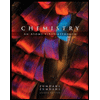 Chemistry: An Atoms First ApproachChemistryISBN:9781305079243Author:Steven S. Zumdahl, Susan A. ZumdahlPublisher:Cengage Learning
Chemistry: An Atoms First ApproachChemistryISBN:9781305079243Author:Steven S. Zumdahl, Susan A. ZumdahlPublisher:Cengage Learning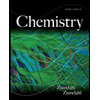
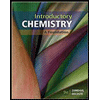 Introductory Chemistry: A FoundationChemistryISBN:9781337399425Author:Steven S. Zumdahl, Donald J. DeCostePublisher:Cengage Learning
Introductory Chemistry: A FoundationChemistryISBN:9781337399425Author:Steven S. Zumdahl, Donald J. DeCostePublisher:Cengage Learning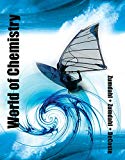 World of Chemistry, 3rd editionChemistryISBN:9781133109655Author:Steven S. Zumdahl, Susan L. Zumdahl, Donald J. DeCostePublisher:Brooks / Cole / Cengage Learning
World of Chemistry, 3rd editionChemistryISBN:9781133109655Author:Steven S. Zumdahl, Susan L. Zumdahl, Donald J. DeCostePublisher:Brooks / Cole / Cengage Learning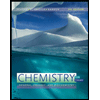 Chemistry for Today: General, Organic, and Bioche...ChemistryISBN:9781305960060Author:Spencer L. Seager, Michael R. Slabaugh, Maren S. HansenPublisher:Cengage Learning
Chemistry for Today: General, Organic, and Bioche...ChemistryISBN:9781305960060Author:Spencer L. Seager, Michael R. Slabaugh, Maren S. HansenPublisher:Cengage Learning

Chemistry
Chemistry
ISBN:9781305957404
Author:Steven S. Zumdahl, Susan A. Zumdahl, Donald J. DeCoste
Publisher:Cengage Learning

Chemistry: An Atoms First Approach
Chemistry
ISBN:9781305079243
Author:Steven S. Zumdahl, Susan A. Zumdahl
Publisher:Cengage Learning


Introductory Chemistry: A Foundation
Chemistry
ISBN:9781337399425
Author:Steven S. Zumdahl, Donald J. DeCoste
Publisher:Cengage Learning

World of Chemistry, 3rd edition
Chemistry
ISBN:9781133109655
Author:Steven S. Zumdahl, Susan L. Zumdahl, Donald J. DeCoste
Publisher:Brooks / Cole / Cengage Learning

Chemistry for Today: General, Organic, and Bioche...
Chemistry
ISBN:9781305960060
Author:Spencer L. Seager, Michael R. Slabaugh, Maren S. Hansen
Publisher:Cengage Learning
Biomolecules - Protein - Amino acids; Author: Tutorials Point (India) Ltd.;https://www.youtube.com/watch?v=ySNVPDHJ0ek;License: Standard YouTube License, CC-BY